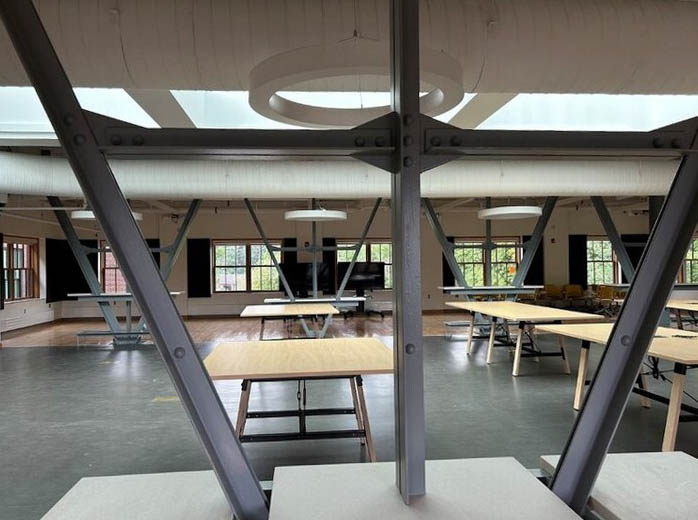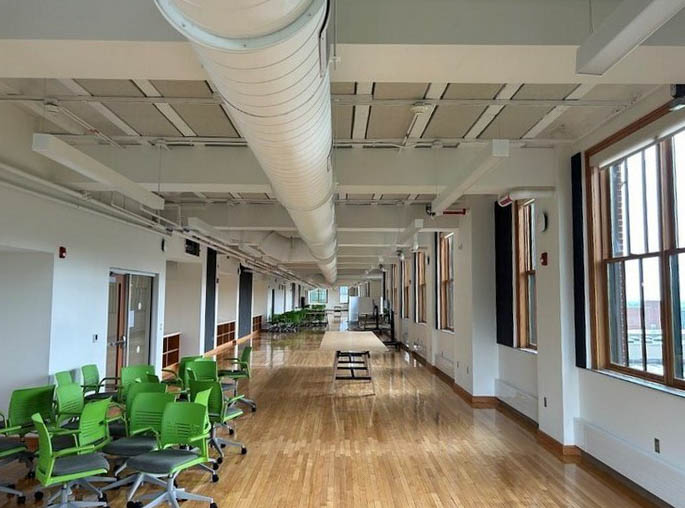ESF’s Marshall Hall reopens this fall with improved space for all
ESF Marshall Hall renovations
After three years of construction and temporary workspaces, students are happy to return to the renovated studios.

For the campus community of SUNY College of Environmental Science and Forestry (ESF), completing the three-year remodeling project on one of the campus’ main buildings means more than just the removal of chain-linked fences.
The reopening means the small programs that the college’s name doesn’t mention — math, environmental writing and landscape architecture — can finally rebuild their academic community after prolonged construction. Now that Marshall Hall is complete, faculty rushed to move everything into the building before the fall semester started Aug. 28.
One department that was hit hard by the shutdown of Marshall Hall was the Landscape Architecture (LSA) department where its studios and offices are located.

LSA majors Julia Smith and Joe Perez said the move was hard on their class, especially since COVID-19 happened simultaneously. Smith and Perez are now beginning their 5th year of the undergraduate program but only spent one semester in Marshall before reconstruction shut it down.
The college moved the entire program into a rented space on Harrison Street, where the students spent most of their time. Perez said having the temporary space separate from the ESF campus was “a little hard at times in both social life and time management.”
Perez and Smith agreed commuting between campus and Harrison Street was inconvenient because public transportation was unreliable and parking was scarce. Also, Smith noted she felt unsafe far from campus, especially when working at the studio into the evening.
LSA graduate student Mike Sirico, who completed his undergraduate at ESF, said the Harrison Street studios varied from those on campus.
While the rented office spaces were suitable because they mirrored professional spaces he might work in in the future, Sirico said students still felt “isolated from campus life and disregarded by the school itself.”
After three years of construction, students said they are thankful for the new space with modern technology. Sirico noted that the LSA department lost potential students during the construction period so he is looking forward to collaborations that can now happen with the program back on campus.
Tyler Dorholt, director of ESF’s writing, rhetoric and communications program, said the remodel forced his program into various corners of the cramped campus library.
Dorholt said the department’s new second-floor Marshall Hall space enabled the program to hire two new associate professors who will help expand the program, especially for environmental writing.
“We have the opportunity to create maybe something we don’t see other places,” Dorholt said, adding that he hopes to have “support and the bandwidth to make people aware of that.”
